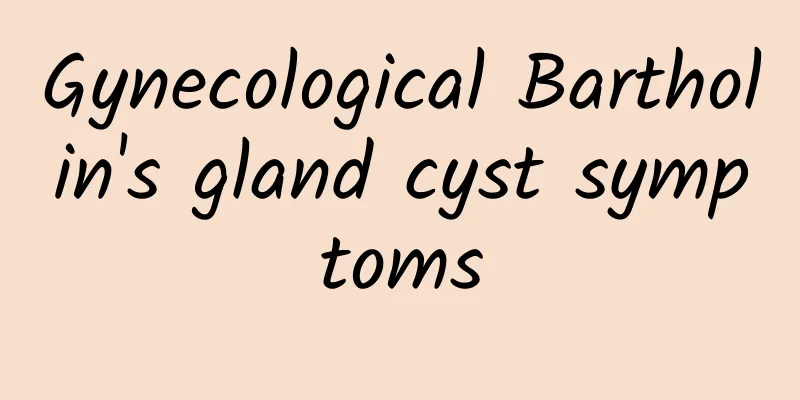Three types of syndrome differentiation and treatment for patients with pelvic inflammatory disease

|
Traditional Chinese medicine syndrome differentiation divides pelvic inflammatory disease into liver depression and spleen deficiency with blood stasis type, phlegm-dampness and blood stasis type, and liver-kidney deficiency with blood stasis type. Providing corresponding treatment according to the different symptoms of these three types of patients can achieve certain therapeutic effects. Liver depression and spleen deficiency with blood stasis Symptoms: lower abdominal distension or dull pain, lumbar pain or distension; irregular menstruation, dark color with blood clots; profuse vaginal discharge, white or sticky; may be accompanied by infertility, chest and breast distension, fatigue, loose or hard stools, dark tongue with teeth marks on the edges, thin white tongue coating, and thin or weak pulse. Treatment: Soothe the liver and strengthen the spleen, remove blood stasis and resolve dampness. Medicinal uses: Bupleurum, processed Cyperus rotundus, Huajuhong, Toosendan fruit, Corydalis, raw Astragalus, fried Atractylodes, Chinese yam, Yun Fuling, Angelica, red peony root, coix seed, and adzuki bean. Phlegm-dampness and blood stasis type Symptoms: lingering dull pain in the waist and abdomen, which comes and goes and gets worse during menstruation; scanty menstruation or amenorrhea, often with pelvic inflammatory mass or hydrosalpinx; profuse vaginal discharge, white and sticky. Pale or dull tongue, white and slippery or watery or greasy tongue coating, soft or fine and smooth pulse. Treatment: Eliminate phlegm and dampness, promote blood circulation and resolve stagnation. Medicinal uses: processed Pinellia, dried tangerine peel, Yun Fuling, Atractylodes, Atractylodes, Fritillaria, Leonurus, Corydalis, Coix seeds, Trillium, Curcuma, Millettia reticulata, pangolin, raw Astragalus, and Euryale ferox. Liver and kidney deficiency with blood stasis Symptoms: Lower abdominal pain, lumbar and sacral pain, lingering pain, menstrual disorders; excessive vaginal discharge, white and thin in texture, accompanied by dizziness, frequent urination, pale tongue, thin tongue coating, deep and thin pulse or fine and astringent pulse, or thin and stringy pulse. Treatment: Nourish the liver and kidneys, remove blood stasis and resolve nodules. Medicinal uses: Cornus officinalis, fried Eucommia ulmoides, Chinese yam, fried white peony root, Euryale ferox, Yun Fuling, Coix seed, dandelion, Millettia reticulata, Prunella vulgaris, and Dianthus superbus. |
<<: The difference between uterine fibroids and uterine hypertrophy
>>: Four major symptoms of adnexitis
Recommend
Causes of recurrent attacks in patients with Bartholinitis
What is the reason for the recurrence of Bartholi...
TCM Syndrome Differentiation and Classification of Amenorrhea
Traditional Chinese medicine divides amenorrhea i...
What causes dysmenorrhea?
Dysmenorrhea is common in adolescent girls, unmar...
Can patients with chronic pelvic inflammatory disease enjoy sexual life?
Pelvic inflammatory disease is a disease that aff...
What is the normal progesterone level at 2 weeks of pregnancy?
The normal value of progesterone in 2 weeks of pr...
Experts explain the important postoperative care of adnexitis
Patients with adnexitis will be weak after receiv...
What do miscarriage contractions feel like and what are the causes of miscarriage?
After a miscarriage, in order to promote the reco...
To prevent cervical erosion, timely and effective contraceptive measures should be taken
Cervical erosion is a common gynecological diseas...
What does the cervix do?
Cervical erosion mainly occurs in the cervix of t...
Is it important to know what are the symptoms of spontaneous abortion?
Many women are not very clear about spontaneous a...
Is it normal to delay your period by 7 to 10 days every month?
It is normal for menstruation to be delayed by 7 ...
Michelle Chen's weight loss secret: drinking fat-reducing tea and taking a hot bath
The otaku goddess Michelle Chen became a huge hit...
What is the cause of miscarriage at six months?
Six months refers to the sixth month of pregnancy...
What to do with ovarian dysfunction? Ovarian maintenance starts with diet therapy
Ovarian insufficiency is also known as premature ...
Diet therapy for vaginitis
Vaginitis is a gynecological disease that is pron...









